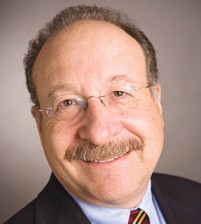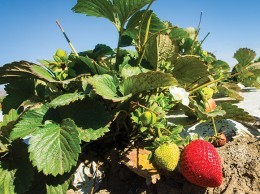Paso Robles wine pioneer sets out in pursuit of the $100 bottle

Henry Dubroff
Paso Robles winemaker Daniel Daou is pursuing the holy grail of California vintners: A cabernet sauvignon or Bordeaux that can reliably fetch $100 a bottle.
And he’s getting so close he can literally taste it. Following in the footsteps of price-leading pioneers such as Justin Baldwin, Daou has been painstakingly tearing out the commodity-grade vines in his west Paso Robles fields and planting specialized vines with more limited production.
“Paso Robles was historically a cheap place to grow a lot of cabernet for not a lot of money,” he said in a long phone interview. “Vineyard management was not geared toward high-end cabernet.”
Daou and a few others, notably the venerable wine writer Robert Parker, think that $100-a-bottle reds from North San Luis Obispo County are not an impossible dream.
Writing in The Wine Advocate back in 2005, Parker challenged the Central Coast to step up its game. “There is no question that a decade from now … the limestone hillsides west of Paso Robles will be as well-known as the glamorous vineyards of Napa Valley,” he wrote. That view was reinforced last year when Paso Robles was named Wine Region of the Year by Wine Enthusiast magazine.
The boom in premium priced wines coming from Paso Robles has been greeted with a degree of skepticism elsewhere in the Tri-Counties, particularly in Santa Barbara County, which is traditionally the place where winemakers sought premium prices for their pinot noirs, chardonnays and other varietals.
Badly beaten up in the recession, many wineries undertook a serious re-pricing of their brands to survive. “Fifteen dollars is the new $25,” was the buzz phrase at the time. A vanishing wine glut means the business model is swinging back toward premium pricing, but one vineyard owner I spoke with scoffed at the prospect of Paso Robles as the region’s price-setter.
None of this fazes Daou, who participated in building and selling a software company in the health care field before retiring at age 32. The UC San Diego computer engineering graduate lived in France until he was 18 and developed two passions: wine making and working outdoors.
When he stumbled on the chalky clay soils west of Paso Robles nearly a decade ago, he was thunderstruck. “This is a typical French terroir that makes the best wine. It has high phenolics, natural acidity and is age worthy,” he said. “This is why the French only plant vines on these kinds of soil.”
And whereas the French and Napa Valley growers need to reach a global marketplace, Daou said the Central Coast has one of the world’s biggest audiences for premium wines within an easy day’s drive.
Just getting the word out about Paso Robles in Greater Los Angeles can have a vast impact — and earn him a lot of money. In the Los Angeles area, he said, “you are looking at 70 percent of the wine sales that occur in California.”
Daou has become a driving force behind the Paso Robles Cabernet and Bordeaux Collective, or CAB, which is holding its second annual CABs of Distinction event on April 22-26, including a dinner and gala at the River Oaks Hot Springs. Some 32 wineries are participating.
For Daou, it comes back to the soil and careful stewardship of relatively low-production vines.
His first release in 2008 caught the full force of the recession head on. “That was when things really started to fall apart,” he said, adding that it took a lot of support from distributor Southern Wines to make sure he sold his limited production runs.
But by last year, one of his February 2013 releases did sell out to the tune of $100 a bottle. “Next is $250 a bottle,” said the unflappable Daou, who hopes to price a 200 case run in 2015 at that price.
While the rest of the Central Coast might overtly view his quest for higher and higher prices as a pipe dream, behind the scenes there are few wine growers who would root against him. After all, no one has yet achieved that mythic $100,000 per acre price that would put the Central Coast on equal footing with the premium locations in Napa Valley. But Daou is convinced it is only a matter of time.
“Idaho grows the best potatoes,” he said. “These soils are known for producing the best wines.”
• Contact Editor Henry Dubroff at [email protected].












